What I read in 2024
2024 is coming to an end, so it is again time for me to reflect on what I have read this year. I ended up reading 39 books this year, of which most were non-fiction, and many were health-related. Just like every year, I will summarize all the books I have read.
My five favorite (☆) books of the year were:
- The Idea Factory (9.)
- I’m Off Then (11.)
- Situational Awareness: The Decade Ahead (14.)
- Good Energy (26.)
- Winter Swimming (28.)
However, it is always difficult to pick the top five books since I genuinely liked most of the books I read this year.
1. Elon Musk
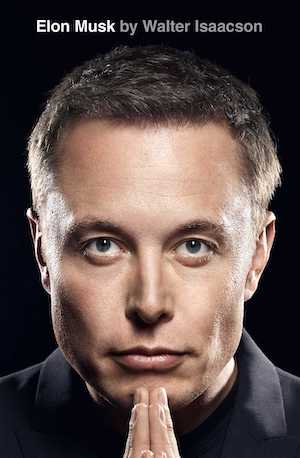
Walter Isaacson has written several popular biographies, for example of Steve Jobs and Albert Einstein. In late 2023, he published his newest book, a detailed biography of Elon Musk’s life. While Elon Musk is definitely a super interesting, albeit controversial, person, I was initially unsure whether I should read the book. It is over 600 pages long, and one reads so much about Elon Musk all the time anyways that I was not sure this would be exciting enough to read 600 pages.
In the end, I did read the book, and I was really happy that I decided to do so. 600 pages may sound like a lot, but it really is not for describing Elon Musk’s life. There is so much to cover, from an unusual childhood in South Africa, his university years, Zip2, PayPal, SpaceX, Tesla, AI explorations, a tumultuous personal life, and of course the Twitter takeover. Because of this, I ended up finding each chapter genuinely interesting. There is so much to cover that there is just no space for adding fluff.
The book also does a really good job at covering Musk’s style of leading companies. It describes how the impressive achievements happened, without glorifying potential flaws. Isaacson did a great job at covering super interesting things, while providing a nuanced view on them. I thought it was a really great book.
However, in hindsight, I wonder whether the biography was written too early. 2024 would have been an interesting year to include in the biography.
2. Immune
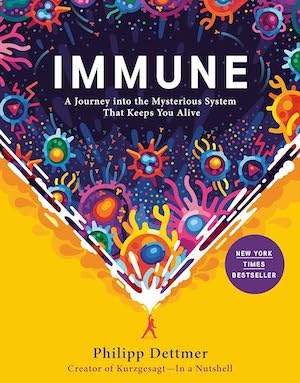
Philipp Dettmer is the creator of Kurzgesagt, a pop-scientific YouTube channel with amazing story telling and visualizations. In Immune, he explains the human immune system in a bottom-up manner. Step by step, he introduces increasingly complex mechanisms of the immune system to fight off diseases.
The entirety of the book consists of amazing story telling. It feels as much as reading a pop-scientific book as it feels like reading an interesting history book about an ancient battle, just that it is the immune system and a disease battling it out. I had a blast reading the book and learned so much from it, so I can only recommend it.
3. The Missing Cryptoqueen
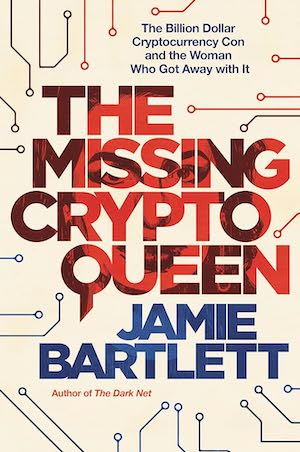
The Missing Cryptoqueen was originally a BBC podcast about Dr Ruja Ignatova, a Bulgarian-German scam artist that founded a fraudulent crypto currency. The book re-tells the story of the podcast, which is an investigation from BBC journalists into how the crypto scam worked and what happened to Ruja Ignatova.
The book was interesting to read. However, there are more mysteries than resolutions, so at times it did not feel quite satisfactory to read the book. The endless crypto scams also get a bit repetitive over time. Nevertheless, it felt like an important book to educate people about such scams.
4. Feel-Good Productivity
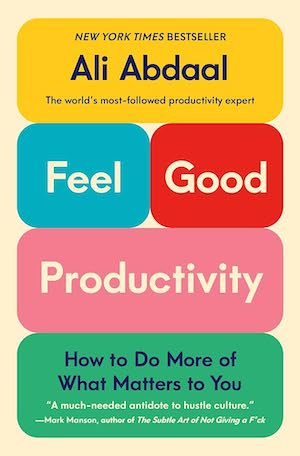
Ali Abdaal is a popular YouTuber who makes videos about productivity. Feel-Good Productivity is his new book about achieving productivity in a way that makes you happy and feel good.
Initially, I was a bit skeptical about reading yet another productivity book. However, I ended up really liking the book. It is very well structured, has great examples and some really sensible advice that I had not seen before. I am pretty sure that I will eventually re-read the book to fully absorb the advice.
5. Too Close to the Wind
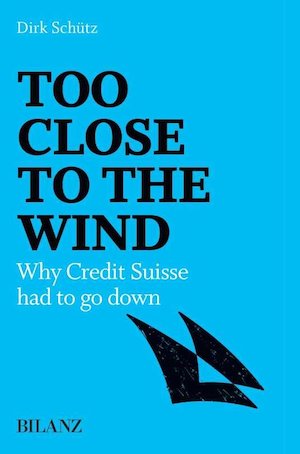
In 2023, Credit Suisse, Switzerland’s then second largest bank, was about to collapse and ended up being acquired by UBS, Switzerland’s largest bank. Too Close to the Wind is the story of what really happened to Credit Suisse in the years before and during the UBS takeover.
Living in Zurich, the Credit Suisse collapse was a huge topic here in the last couple of years, which made the book even more interesting to read. The book ended up consisting of a mix of finance topics and a lot of inter-personal drama that happened behind the scenes. I found it a well-research book, albeit with a writing style that sometimes felt over the top.
6. Think Again
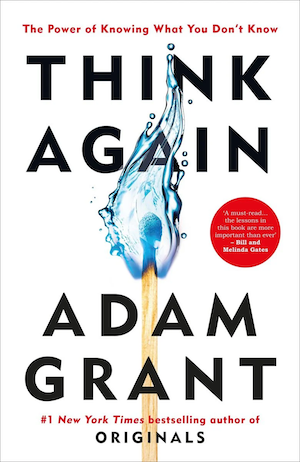
Think Again is a pop-scientific book about re-thinking, i.e. re-evaluating one’s beliefs in the face of new evidence. While we often think of intelligence as being able to learn quickly, unlearning and re-learning can be even more difficult. On top of that, these are skills that we often do not get taught in school.
The book was exactly the type of book I’m really into: pop-scientific about psychology and one gets to learn about how to avoid common flaws in thinking. And fortunately, the book did not disappoint. It is well-written and contains lots of really interesting observations and theories.
7. Building a Second Brain
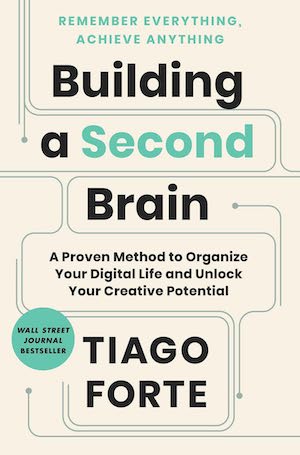
While we have access to more information than ever before, it is hard to remember everything we would like to remember. The book Building a Second Brain proposes that we do not need to focus on remembering, but instead on properly building up our own, digital knowledge base, i.e. a second brain. The author discusses techniques for how exactly to do that.
While I was quite on board with the initial idea, I found the book to be incredibly repetitive. I’m pretty sure one could easily compress the book into a 40 page essay without losing too much content.
8. What is Life?
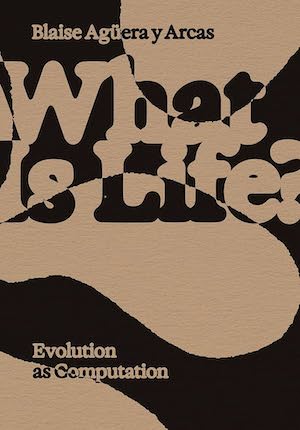
What is Life is the first volume of What is Intelligence, a series about the nature of intelligence and how it evolved. The series is written by Blaise Aguera y Arcas, an artificial intelligence researcher and VP at Google. I find Blaise an incredibly inspiring person, with ideas that very few other people out there have as early as him.
This first volume, What is Life, discusses the computational nature of life, the role of self-replication and emerging complexity. It masterfully combines many different disciplines, from computer science and machine learning to biology and philosophy. I found it to be an amazing read and can only recommend it.
9. The Idea Factory ☆
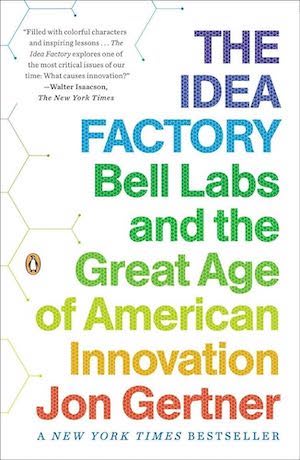
The original Bell Labs used to be the world’s greatest industrial research lab. Some of the things pioneered at Bell Labs were the first transistors, lasers, information theory, Unix, the C programming language and communication satellites. The list of inventions is so incredible that I have a hard time finding a modern equivalent to it; probably Google Research and DeepMind come closest to it.
The Idea Factory tells the story of this amazing research lab – how it came to be, what made it so successful and what it was like working there. I found the book to be an amazing read. Bell Labs seems like a magical place, and it was so interesting to learn more about it.
10. Who Are We Now?
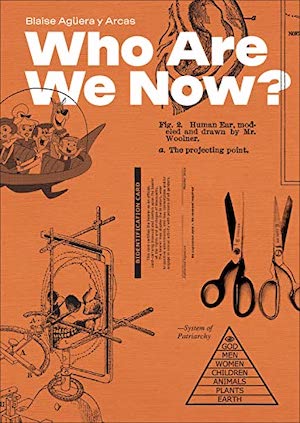
After reading, What is Life?, I decided that I would also like to read one of Blaise’s other books, Who Are We Now?. At the heart of the book are surveys that Blaise, the author, performed over the course of many years. In these surveys, he asks Americans about behavior and identity, for example about gender and sexuality. The book then analyzes the results of these surveys and discusses how to think about them.
I found it to be an amazing book. In particular, the book made me realize that many, seemingly simple, questions can be much more complex than one would think at first. For example, I still have in mind the author’s survey about handedness, where one might naively assume that there are just two possible answers (left and right handedness). However, it turns out that there are many more complex yet reasonable answers, just as there are with many other questions.
11. I’m Off Then ☆
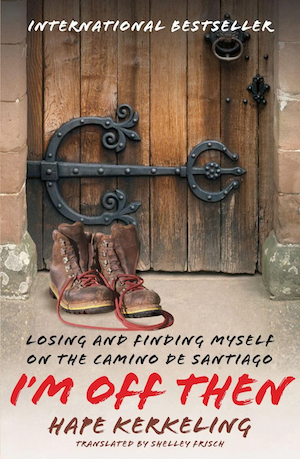
Hape Kerkeling is a German comedian that in 2001 decided to march the 500 mile Camino de Santiago pilgrim route. Being rather unprepared, Kerkeling is not the type of person you would expect to do this on a whim. However, Kerkeling is also really determined not to give up.
I’m Off Then is his diary of how he manages to do the pilgrimage. Every day, he reflects back on his day, covering both his adventures as well as his mental state. I found it to be a superb book. Kerkeling is both eloquent and well-reflected, making it a joy to follow along. Though I am not a religious person, the book made me think that I might want to do something similar at some point in my life.
12. Designing Your Life
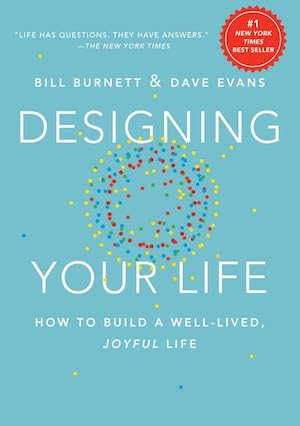
Designing your Life was originally a class at Stanford, and then turned into a book. Its fundamental thesis is that life should be purposefully lived, i.e. one should design it based on what one wants from life. To do a good job at this, one can use design principles.
All of the advice in the book is sound, and I also found some part of it to be thought-provoking. However, I think that I read the book at the wrong time of my life. The book has a lot of exercises to figure out how one should design their life, and, at the time of reading, I just did not have enough headspace to do them properly. That’s on me though, and maybe I’ll eventually re-read the book.
13. Influence Empire: The Story of Tencent
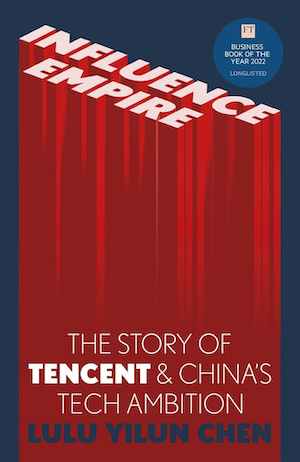
Tencent is one of the major Chinese tech companies. Among other things, it is the maker of WeChat, the popular Chinese messaging app. The Story of Tencent is a biography of Tencent, telling its story all the way from its creation to its impressive growth and contemporary challenges It also talks about the relationship and competition with other Chinese tech companies, in particular with Alibaba.
I found the book to be super interesting. It gave me a good overview of the Chinese tech industry, and it was genuinely interesting to read about how the Chinese tech ecosystem works, what the culture is like, and how different products and tech companies emerged. I particularly liked that the book felt very fair in terms of criticism, addressing both problems with the Chinese system as well as with Western mentality and an often improper sense of superiority.
14. Situational Awareness: The Decade Ahead ☆
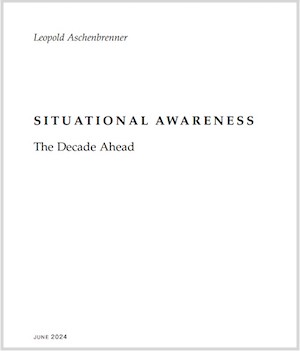
Initially I was not sure whether I should count Situational Awareness as a book to be listed in this summary. However, it is such a highly relevant, intriguing and captivating read that it would be a mistake not to do so.
The author, Leopold Aschenbrenner, used to work on alignment problems at OpenAI, and eventually got fired for raising security concerns and allegedly leaking things. In Situational Awareness, he paints a picture of how AI development is likely to continue, what that means for AI security and the geopolitical impacts of that.
I found the book to be absolutely incredible. Aschenbrenner is highly eloquent and has interesting theses to state. He provides good evidence for his predictions and makes important policy suggestions. For people that are interested in AI or geopolitics, this should be a required read. However, it is worth noting that Aschenbrenner is also highly opinionated, in particular when it comes to political issues.
15. Hooked
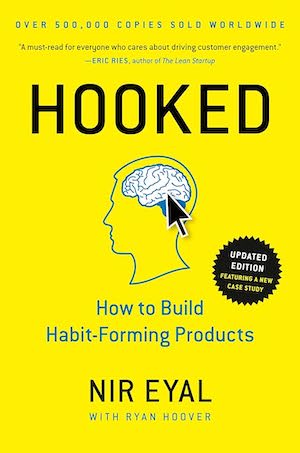
Hooked is, or at least was at some point, an infamous book in tech companies. It is a pop-scientific psychology book that talks about how to build products that let users form long-lasting and healthy habits. Unfortunately, many tech companies ended up focusing on the long-lasting part of habit creation and less so on the healthy aspects, even though the author emphatically tries to cover both dimensions.
I found the book to be an interesting read. It is cool to learn about the principles behind products that make you stick to them. More generally, I would also say it is a great read for anyone interested in applied psychology.
16. Indistractable
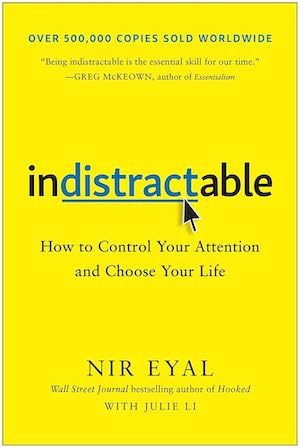
Nir Eyal is the author of both Hooked and Indistractable. A few years after writing Hooked, he became increasingly unhappy that his suggestions were being used to build addictive social media products. At the same time, the companies were ignoring his suggestions of how to build products that lead to healthy habits.
In Indistractable, he takes the user’s point of view, and gives advice on how to control one’s attention to develop healthy ways of interacting with such products. I thought that the book was great, and that Eyal is the perfect person to write it considering that he also wrote the book that social media companies used to make products too addictive.
17. This Is How They Tell Me the World Ends
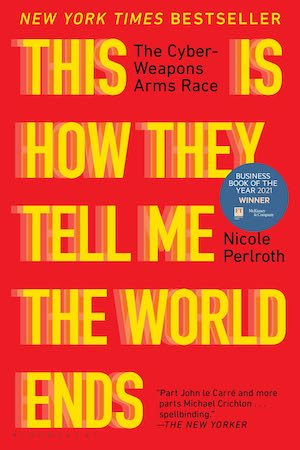
This Is How They Tell Me the World Ends tells the history of cyber attacks. It starts all the way from the very first attacks that were performed on typewriters, way before the internet and common, general-purpose computers. The book then also covers how exploits on the internet came to be, and how bug bounty programs became a thing. Furthermore, the book talks about the geopolitical aspects of it, covering the US as well as other countries like Israel, Iran, Russia and China.
I found the book to be super interesting. I learned a lot of things, and most of the time it felt like reading a real-life thriller.
18. Glucose Revolution
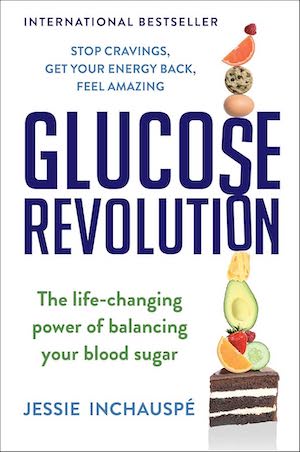
Glucose is the primary source of energy for cells in the body. After digesting food, the body distributes glucose via the blood stream. However, when eating food with lots of sugar or carbs, and with too little fiber, too much glucose can enter the blood stream all at once. In such situations, the body releases more insulin to deal with the large amounts of glucose.
However, when this commonly happens, the body gets more resistant to insulin and has a harder time dealing with glucose in the blood stream. Furthermore, processing large amounts of glucose all at once is generally taxing for the body. As such, regularly eating large amounts of sugary and carb-heavy food can lead to insulin resistance, type 2 diabetes, and a large array of other diseases.
In Glucose Revolution, Jessie Inchauspé, who also happens to be running the Glucose Goddess social media account, explains all of this in detail as well as strategies for better nutrition and health habits. I learned a ton of things from the book, and it really made me change a bunch of habits for the better. I also ended up using a glucose monitor for a couple of weeks after reading the book.
19. Grain Brain
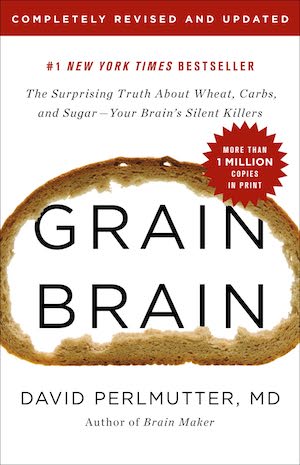
After liking Glucose Revolution so much, I decided to also read Grain Brain. It covers a similar range of topics, but is much more focused on grains and the many health consequences of regularly eating highly-processed grains.
The book also made me change many habits, and I now consume way less grains and pretty much no highly processed ones. So all in all, I think it was worth reading the book. However, I have to say that some parts of the book seemed a bit unscientific and hyperbolic, so it felt like a book where one has to carefully consider the advice given.
20. Hygge
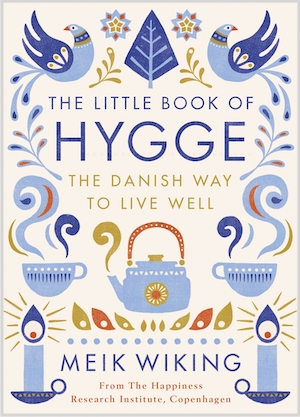
Hygge is the Danish concept of happiness. It has no verbatim translation to English, but loosely corresponds to the feeling when you’re warm and cozy inside with candles around you while it is raining or cold outside. It also happens to be that the Danish are among the happiest nations in the world, as measured by various surveys.
In the book Hygge, Meik Wiking, the founder of the Happiness Research Institute in Copenhagen, talks about the Danish approach to life. It was really a feel-good book to read and I learned lots of things. The book also really makes me want to visit Copenhagen.
21. Brain Energy
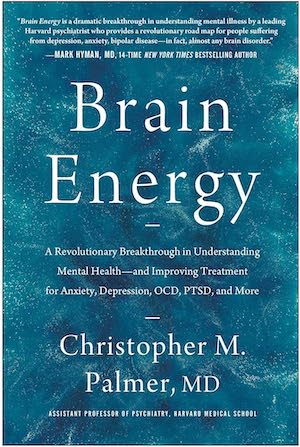
We often treat diseases of the brain, e.g. among many others, depression, ADHD, schizophrenia, and autism, as completely separate diseases, each neatly classified into its own thing. However, in the brain and body, all of these diseases follow common patterns. In particular, they are all heavily impacted by the body’s metabolism, i.e. how well our cells can function, including turning nutrients into energy and repairing the body.
Brain Energy takes such a holistic point of view on the connection of metabolism to mental health. It explains the science behind this, and then exhaustively discusses how various diseases of the brain are in particular impacted by metabolism. Furthermore, the author also provides practical advice for how to fix one’s metabolism to better deal with such diseases.
I found the book to be a great read. The book really made me see things more holistically and appreciate the role of metabolism, and having a healthy lifestyle. However, at times, I found the book too repetitive since it really goes through many individual diseases where things look fairly similarly from a metabolic perspective.
Furthermore, there was a good amount of overlap with Good Energy. If one is only willing to read a single book on the role of metabolism, I would recommend Good Energy since it covers not only mental health but also other diseases that are impacted by metabolism.
22. On the Edge
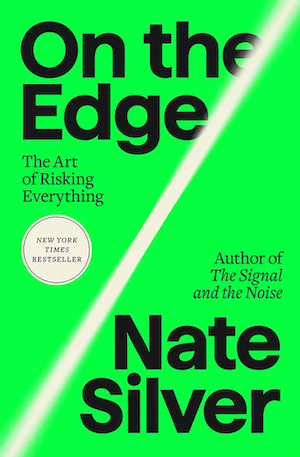
Nate Silver is a statistician and author that became famous for his incredibly accurate election predictions in 2008 and 2012. In 2017, I read his first book, The Signal and the Noise. I learned a ton of things from that book, in particular on getting a better intuition on statistics and predictions. So when I saw that Silver’s new book, On the Edge, would be released in 2024, I immediately put it on my reading list.
Unfortunately, I found the book to be somewhat disappointing. Silver talks about what he calls The River, a group of people, common in the worlds of Silicon Valley, Hedge Funds and poker, that are particularly adept at thinking about risk in quantitative and systematic ways. He then covers what exactly he understands by such decision making and how that applies to different things in the world. While I would like to consider myself part of this “River”, I found the naming and the grouping of people a bit silly.
Furthermore, a large chunk of the book covers Silver’s experience of playing poker at a professional level. I had already read a lot about poker and blackjack, and so these stories just were not that interesting to me anymore. Looking back at the book, I don’t think it made the impact on me that his first book did, and I’m a bit sad about that given my high expectations.
23. A Poison Like No Other
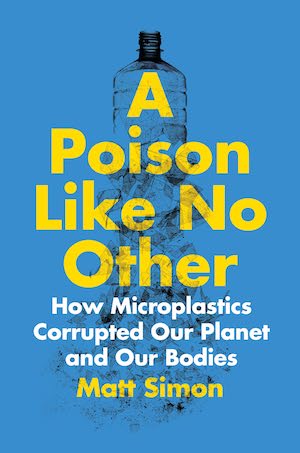
Plastics are all around us, from packaging for food to cosmetics and cookware. This has also led to a crazy amount of plastic in the environment, particularly the oceans. Sometimes this plastic breaks down into microplastics, e.g. when heat or acidity are applied to it. Microplastics harm both the environment and our health, and are increasing at alarming levels.
A Poison Like No Other tells the story of how this came to be and how bad the situation really is. Even in the most remote places, we can now measure significant amounts of microplastics in the environment. The book consists of interviews with scientists as well as the author’s journey to learning more about this. I thought the book was a good read, and it really made me much more conscious about trying to avoid the use of plastic as much as possible.
Originally, this tweet from Andrej Karpathy made me want to read the book. I still think that he summarizes a great takeaway from the book.
24. The Good Gut
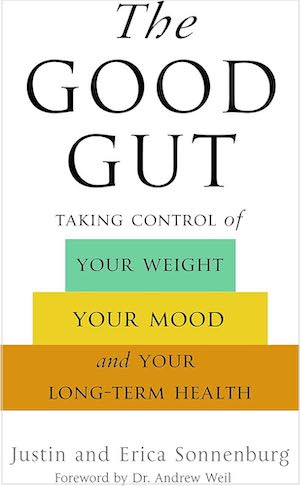
The gut microbiome is the set of bacteria that live in one’s digestive system, in particular in the gut. They not only help us to break down and absorb nutrients but also play a key role in the immune system. Furthermore, it turns out that the gut also has a strong connection to the brain, and that a healthy and diverse gut microbiome has a strong impact on mental health as well. How exactly your gut microbiome looks like depends on what you eat, how you grew up and in what environment you live now.
The Good Gut is a book written by Justin and Erica Sonnenburg, a husband-wife team that jointly runs an academic lab at Stanford, focusing on the gut microbiome. In the book, they explain the science behind the gut microbiome affects our immune system and mental health. They also provide practical advice and make a strong case for regularly eating fermented food to nourish the gut microbiome.
I really liked the book. The gut microbiome is just super fascinating and so cool to learn about. I’ve been eating fermented food regularly for about a year now, but the book also convinced me that I want to make my own kimchi and kefir.
Lastly, I have to say that the dynamics of how the gut microbiome comes to be and interacts with the rest of the brain also remind me of what I’m interested in in the field of artificial intelligence: how different intelligent models interact and jointly influence each other. In the gut microbiome, it’s bacteria instead of models, but the dynamics are just as interesting.
25. The Interior Design Handbook
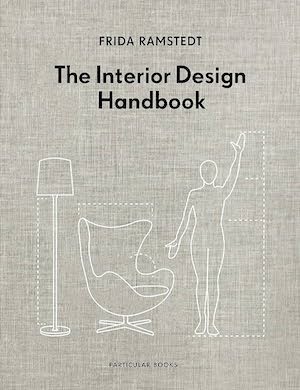
At some point this year, I decided that I want to make my apartment feel more homely. Maybe that was caused by reading Hygge which made me really desire this warm, cozy feeling of a home.
In the process of this, I decided that I would like to learn more about interior design. The Interior Design Handbook is the book that I ended up reading to that end.
The book has lots of great advice, visualizations and gives a really good, systematic overview of things. I can only recommend it. The three main things I took away from the book is that I would like to have more plants in my flat, more photos and that paying attention to the right kind of light is really important.
26. Good Energy ☆
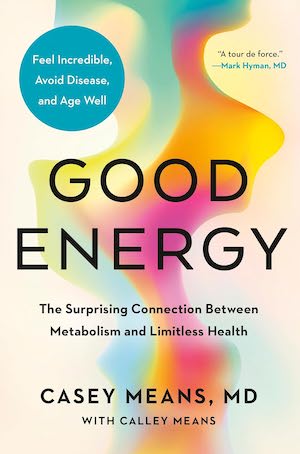
Metabolism has many connections to different aspects of health. This not only includes mental health, as discussed in Brain Energy, but also various other diseases. In Good Energy, Casey and Calley Means, the authors, discuss why this is the case and provide practical health advice.
I really enjoyed the book. It has lots of great advice and really made me see some things through a different lens. The book also convinced me that I should be trying heat and cold exposure, in the form of sauna and ice bathing.
Another new practice I took away from the book was mindful eating and practicing gratefulness for one’s food. Now I try to do this for at least one meal, but ideally most meals, a day, by considering the food consciously and thinking about what I am thankful for.
27. How Emotions Are Made
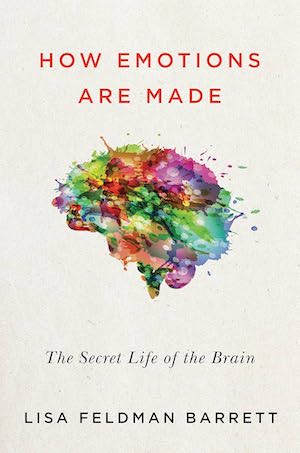
Lisa Feldman Barrett is a psychologist that studies emotions – what they are and how they are expressed in different cultures. When she started her research, it was the common assumption that a default set of emotions are hardwired into us and expressed the same way across cultures. However, Feldman Barrett discovered that this is not true; there are no universal emotions and things can really differ across cultures.
Instead, Feldman Barrett put forward the new theory of constructed emotions. In this theory, emotions are learned and reactions are predictive. We model our environment and react to what we think will happen. How exactly this happens differs across cultures, and can also vary significantly across different individuals.
All in all, the book was a really great read and I learned lots of things from it.
28. Winter Swimming ☆
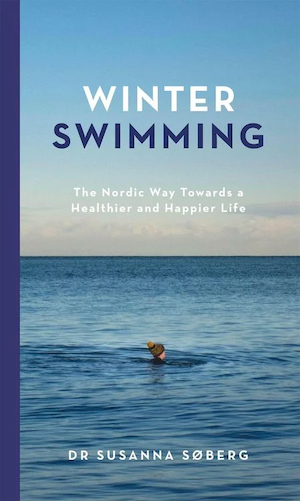
After Good Energy convinced me that ice bathing is a good thing to do for one’s health, I wanted to read more about the topic. I came across the Winter Swimming book through Huberman’s podcast, where Susanna Søberg was the guest for an episode on cold and heat exposure. Søberg did her PhD on the topic, and hence this seemed like a great book to read.
I ended up absolutely loving the book. It gives a great overview of the science on the topic, with many interesting studies – for example, did you know that regularly taking cold showers significantly reduces one’s risk of catching a cold?
Furthermore, the vibe of the book is just great. Most of the book plays at a winter swimming club in Copenhagen and it’s just a joy to read. The book not only made me integrate ice bathing and sauna into my weekly routine, but it also changed my view of Winter – now there’s really something to look forward to in Winter, and that makes all the difference in a season without as much sunlight.
29. The Comfort Crisis
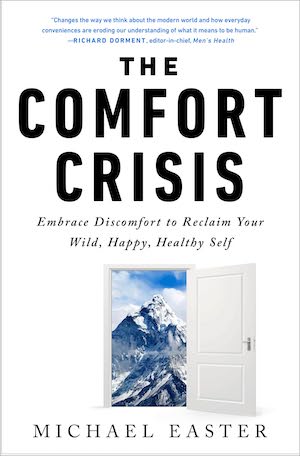
The Comfort Crisis tells the story of Michael Easter, who decides to spend a month on a back-country hunting expedition in Alaska. This story line is intertwined with how he prepares for this trip, as well as with many interviews on the topic, covering both the spiritual and the scientific parts of living fairly isolated in the wilderness.
I did not at all identify with the author’s desire to go hunting. However, I think that he brings up some really good points on meat consumption and hunting. It now seems like an odd ethical stance to me to be willing to buy meat in the supermarket, from animals that were raised in terrible conditions, while condemning hunting for meat of animals that lived long and healthy lives. Particularly, since the author only kills elderly animals, tries to do so in a sustainable way with respect to the herd, and also in a manner that leads to as little pain as possible for the animal.
Similarly, the author makes good points about us being too used to many comforts of daily life, and thus being often out of touch. All in all, I’m still not the kind of person that would go on a hunting trip, but the book did make me reconsider some things in a good way.
30. Revenge of the Tipping Point
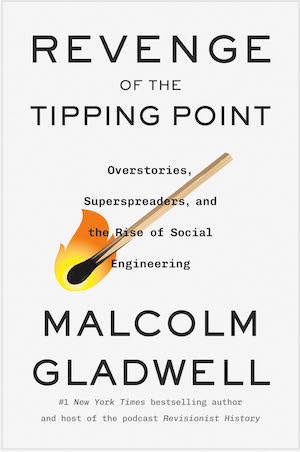
Malcom Gladwell is one of my favorite authors. Among the books that I read from his last year was The Tipping Point. The book talks about how trends happen: at first very slowly, and then suddenly, when a tipping point is reached, seemingly all at once. In the process, there are people that are particularly good at seeing trends happen before it reaches the tipping point.
Revenge of the Tipping Point can be considered an addendum to the original book, though it can certainly also be read as a standalone book. Gladwell covers various new phenomena about tipping points that he became aware of, sprinkled with interesting stories around them, e.g. on why the Ivy League cares so much about sports, and why some neighborhoods in the US went so quickly from being all-white to being all-black neighborhoods.
I found the book to be an incredible read. As always, Gladwell finds the most interesting stories and tells them incredibly eloquently. At the same time, he notices fascinating patterns in things and suggests intriguing models for them.
31. Seven and a Half Lessons about the Brain
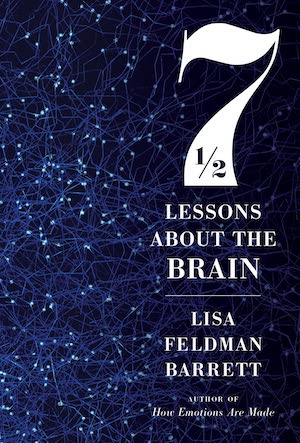
After reading How Emotions Are Made from Lisa Feldman Barrett, and really liking it, I decided to read her other book, Seven and a Half Lessons about the Brain. The book consists, as the title aptly states, of seven chapters, each discussing an insight about the brain in more detail. There is also a half lesson, which is that the brain is not just for thinking but also for keeping our body running and regulating lots of things.
I thought the book was really great. It’s an easy read, covering lessons about the brain at a high level. At the same time, it was super intriguing, with lots of ideas I hadn’t really thought about before. Since reading the book, I can’t get the idea of the predictive brain out of my head; the concept that we not only process the world as it is now but also based on what we think will happen. Clearly that’s useful behavior evolutionary, and there is lots of evidence that this is also what people do.
32. Waking Up
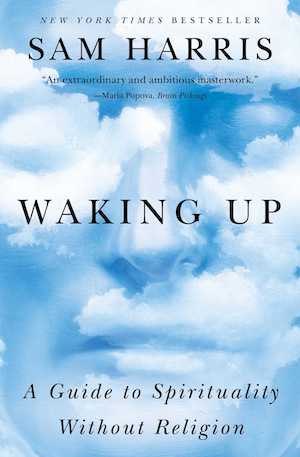
Sam Harris is a neuroscientist that I mostly heard about before through his advocacy for meditation. In Waking Up, he talks about spirituality without religion. One part of the book is autobiographic, while the other is exploring spirituality from a scientific lens.
I found the book to be super interesting to read. I got some new view points on various things, and became more curious about the concept of ‘spirituality without religion’. However, I found the last part of the book to be less inspiring. It is mostly warning of false gurus, which makes sense, but also felt more obvious and dull to read about.
33. Ikigai
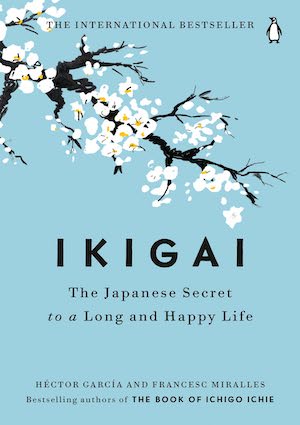
Reading Hygge inspired me to also read about the Japanese way of life, Ikigai. Similarly to Hygge, there is no direct translation to English, but Ikigai loosely maps to the concept of finding one’s purpose in life, the reason to get up in the morning.
The book was an interesting and fun read. However, it was not as specific to the Japanese way of life as I was hoping for. Instead it also covered longevity on a high, but crude, level that felt like too much of a diversion from what the cover advertised. Longevity is an interesting topic, and one I’ve been reading a lot about, but I think this just did not do its justice.
34. The Wim Hof Method
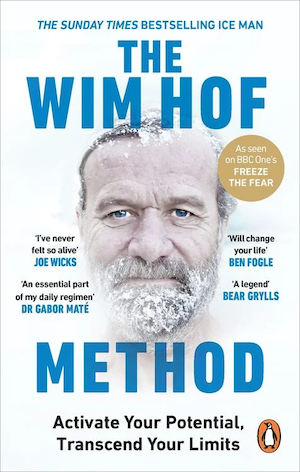
Wim Hof is probably the person most well known for popularizing ice bathing. He holds many world records and is an outspoken proponent of ice bathing. After Winter Swimming was such a great read, I took an ice bathing class that involved some Wim Hof breathing exercises. To learn more about this element of breath in cold exposure, I decided to read Wim Hof’s book.
However, that was a mistake. This was quite easily the worst book I’ve read all year. Most of the book consists of Hof boasting about his accomplishments, while explaining little what to do, let alone why those techniques actually work. It reads more of an autobiography, and less like a book that is supposed to help people with something.
I’m glad that my first exposure to ice bathing wasn’t through this book. Otherwise, I probably would’ve stayed far away from the practice.
35. The Vegetarian
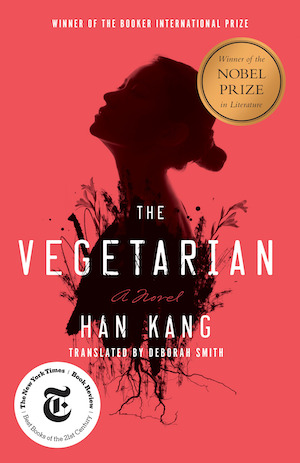
In 2024, Han Kang was awarded the Nobel Prize for literature. The Vegetarian is one of her acclaimed works. It tells the story of Yeong-hye, a Korean woman who, after a particularly bad nightmare, decides to turn vegetarian. Her family’s initial reaction is disbelief, though over time that morphs into much more adverse reactions.
All in all, I’m still not quite sure what to think about the book. It was interesting to read about Korea’s culture with respect to meat and being Vegetarian. However, the story of the book gets increasingly more bizarre and hard to follow, and eventually is about much more than just being Vegetarian. It’s definitely a novel that one needs to actively interpret, and I found that progressively harder and harder to do.
36. I Don’t Want To Talk About It
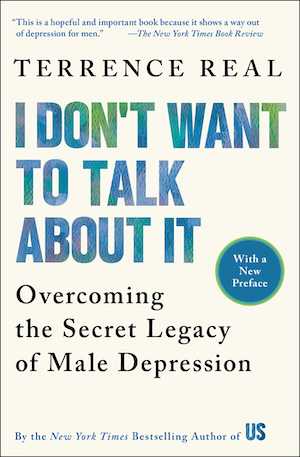
Depression is a hidden epidemic among men. While of course all genders can suffer from depression, men are particularly likely to hide it. This leads to the impressive statistic that, in the US, women are twice as likely to be diagnosed, while men have four times higher suicide rates, with depression being one of the main factors.
In I Don’t Want To Talk About it, Terrence Real, the author and a practicing therapist, talks about why this is and what to do about it. A lot of his advice comes down to culture and how boys are raised. It is common to tell boys to “toughen up” or to “take it like a man”, instead of openly discussing one’s feelings. Similarly, it is still common that men are expected to hide any pain and weaknesses.
Besides talking about these issues, the book is intertwined with the stories of many patients of the author, as well as his own personal story with his dad. I found the book to be an incredible, deeply touching read. A good chunk of the book applies not only to men but to everyone more broadly. However, given how men are especially unlikely to talk about their issues, it is probably also good that such a dedicated book exists.
Books in German
While I mostly read in English, I did end up reading the following three books in German. As far as I’m aware, there are no English translations of those books.
37. Gebt mir etwas Zeit

After liking I’m Off Then so much, I decided to read Kerkeling’s newest book, Gebt Mir Etwas Zeit. The book is currently only available in German and the title translates to “give me some time”.
Kerkeling has spent several years trying to reconstruct his family history, as far back as multiple centuries. In the book, he talks about how he did this as well as selected stories of particularly noteworthy lives of relatives.
The book has some interesting stories, as well as his own, personal and deeply heart-breaking love story. It was an interesting read, but a lot of the other side stories in the book felt too repetitive.
38. Ein starker Körper kennt keinen Schmerz

Werner Kieser was a Swiss athlete and entrepreneur that founded a gym chain, named after him, that is popular in German-speaking countries and that is known for its scientific approach to weight training.
In this book, Kieser shares lots of advice on weight training and on different exercises. I thought it was a great read and much more scientifically rigorous than a lot of related material out there. For me it was particularly interesting since I go to one of his gyms and I can really tell that they implemented a lot of the advice given in the book.
39. Norwegen: Reisen im Land der Fjorde
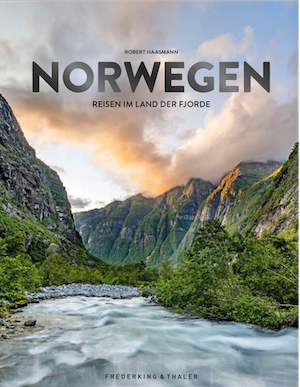
This book provides travel advice for Norway, as well as lots of amazing pictures. I thought the book was beautifully done. I can’t wait to go to Norway some time – maybe in 2025.
Looking back at the year, I am really happy with the breadth of books, and think I learned a lot from reading this year. However, I ended up a little bit behind my goal of the 52 books a year that I read in 2023 and 2022. I think this was mostly because I have been reading a lot more papers this year, and thus did not get as much to reading books.
Next year, I hope to get back to 52 books a year again.